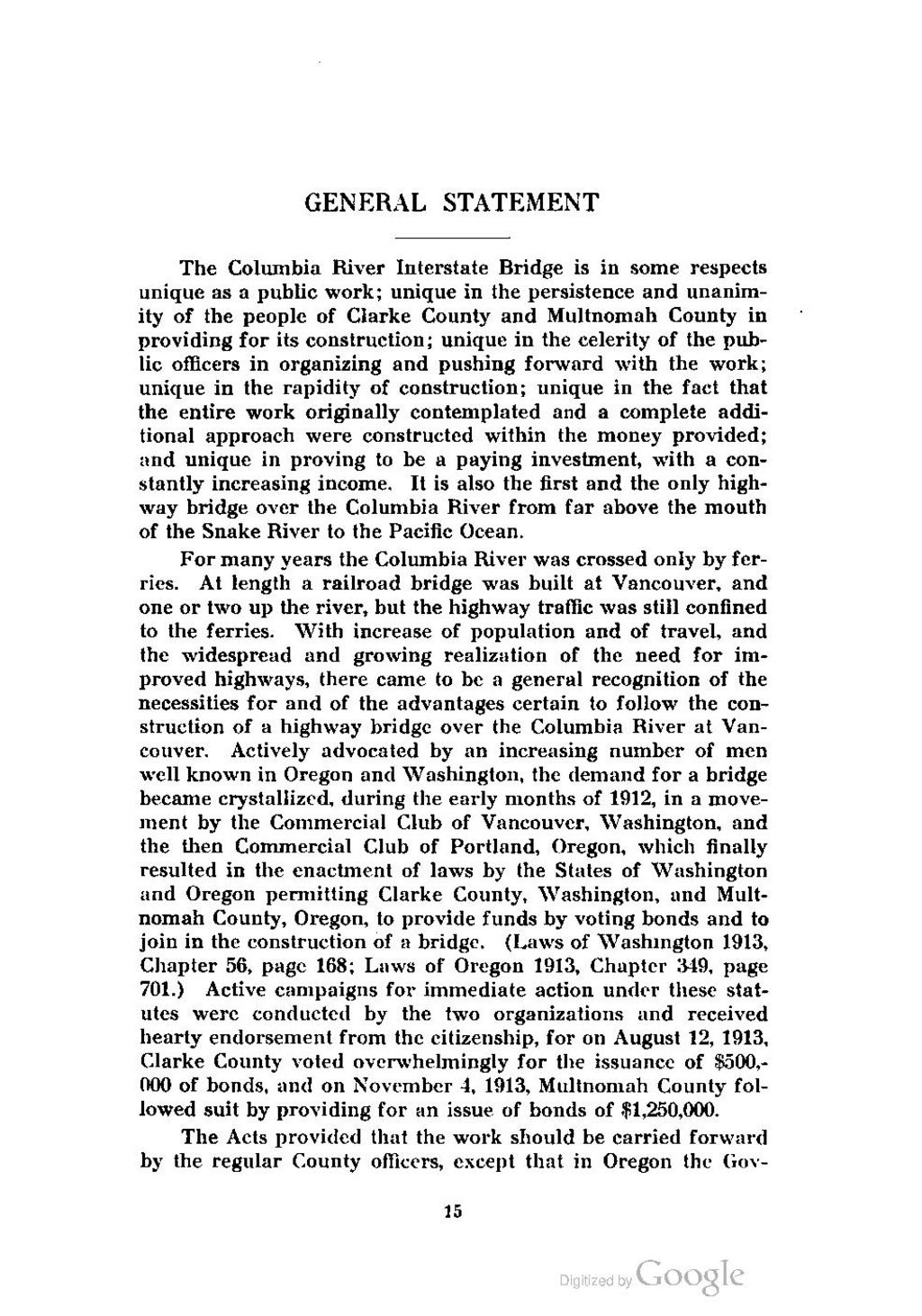GENERAL STATEMENT
The Columbia River Interstate Bridge is in some respects unique as a public work; unique in the persistence and unanimity of the people of Clarke County and Multnomah County in providing for its construction; unique in the celerity of the public officers in organizing and pushing forward with the work; unique in the rapidity of construction; unique in the fact that the entire work originally contemplated and a complete additional approach were constructed within the money provided; and unique in proving to be a paying investment, with a constantly increasing income. It is also the first and the only highway bridge over the Columbia River from far above the mouth of the Snake River to the Pacific Ocean.
For many years the Columbia River was crossed only by ferries. At length a railroad bridge was built at Vancouver, and one or two up the river, but the highway traffic was still confined to the ferries. With increase of population and of travel, and the widespread and growing realization of the need for improved highways, there came to be a general recognition of the necessities for and of the advantages certain to follow the construction of a highway bridge over the Columbia River at Vancouver. Actively advocated by an increasing number of men well known in Oregon and Washington, the demand for a bridge became crystallized. during the early months of 1912, in a movement by the Commercial Club of Vancouver, Washington, and the then Commercial Club of Portland, Oregon, which finally resulted in the enactment of laws by the States of Washington and Oregon permitting Clarke County, Washington, and Multnomah County, Oregon, to provide funds by voting bonds and to join in the construction of a bridge. (Laws of Wash1ngton 1913, Chapter 56, page 168; Laws of Oregon 1913, Chapter 349, page 701.) Active campaigns for immediate action under these statutes were conducted by the two organizations and received hearty endorsement from the citizenship, for on August 12, 1913, Clarke County voted overwhelmingly for the issuance of $500,000 of bonds, and on November 4, 1913, Multnomah County followed suit by providing for an issue of bonds of $1,250,000.
The Acts provided that the work should be carried forward by the regular County officers, except that in Oregon the Gov-
15
